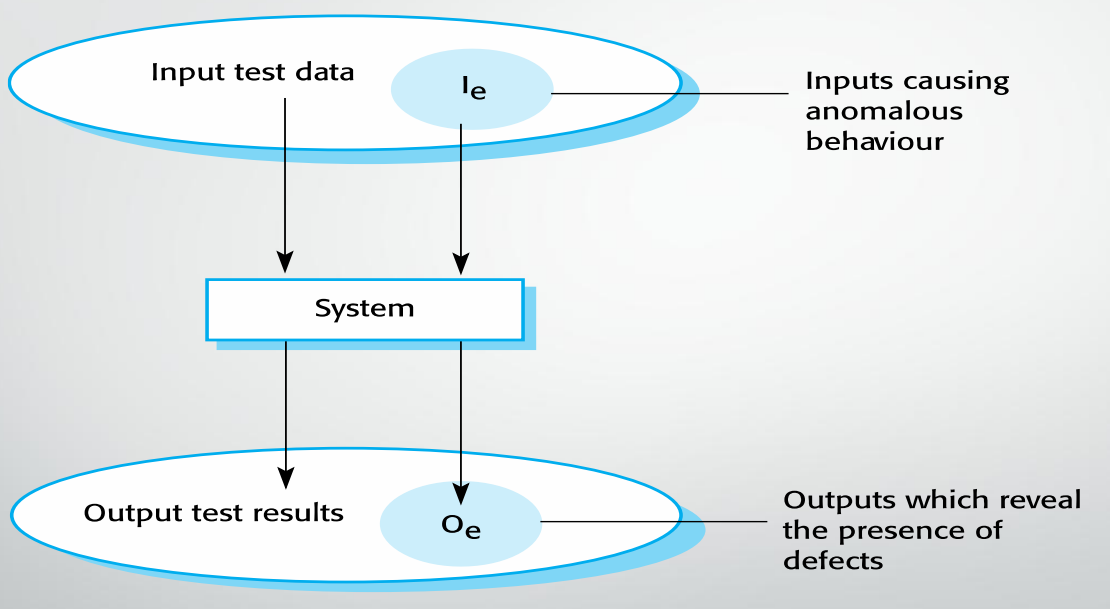Testing is to show that a program does what it is intended to do, and to discover program defects before it is put into use.
Software is tested by using artificial data.
Testing is a part of a more general verification and validation process, which also includes static validation techniques.
Goals of Testing
- To demonstrate to the developer and the customer that the software meets its requirements.
- Custom software: At least one test for every requirement in the requirements document.
- Generic software: There should be tests for all the system features.
- To discover situations in which the behavior of the software is incorrect, undesirable, or does not conform to its specification.
Validation Testing
The first goal leads to validation testing.
It is to demonstrate to the developer and the customer that the software meets its requirements.
And a successful test shows that the system operates as intended.
Defect Testing
It is to discover faults or defects in the software where its behavior is incorrect or not in conformance with its specification.
A successful test is a test that makes the system perform incorrectly, and so expose a defect in the system.
Input-output Model of Program Testing

Aims of Validation and Verification
- Validation: To ensure that the software meets the customer's expectations, because the software should do what the user really requires.
- Verification: To check that the software meets its stated functional and non-functional requirements. The software should conform to its specification.
Required Confidence Level of Software Testing
It depends on 3 factors.
- Software purpose:
- The more critical the software is, the more important that it is reliable.
- User expectations:
- Many users have low expectations of software quality due to the experiences with buggy, unreliable software.
- Marketing environment:
- Competing products.
- Price - If a software product is very cheap, users may be willing to tolerate a low level of reliability.
- The required schedule for delivering the system.
Software Inspections
The verification and validation process may involve software inspections and reviews.
Inspections and reviews analyze check the:
- System requirements
- Design models
- Program source code
- Proposed system tests.
Inspections and Testing
- Inspections and testing are complementary and not opposing verification techniques.
- Both should be used during the validation and verification process.
- Inspections can check conformance with a specification but not conformance with the customer's real requirements.
- Inspections can not check non-functional characteristics such as performance, usability, etc.
Advantages of Inspections
- It is a static process, there is no need to be concerned with interactions between errors.
- Incomplete versions of a system can be inspected without additional costs. If a program is incomplete, developers need to develop specialized test harnesses to test the available parts.
- An inspection can also consider broader quality attributes of a program, such as compliance with standards, portability and maintainability.
